The abandonment rate in the financial industry can be reduced — but only by addressing the underlying causes and redesigning digital experiences with real user needs in mind.
Is the MiCA regulation working? Early effects on the European market

Regulation (EU) 2023/1114 on markets in crypto assets, better known as MiCA, came into force on 30 December 2024 and marks a turning point in Europe’s approach to cryptocurrencies. Just a few months into its implementation, it is already possible to identify some tangible early effects of MiCA across the European market: significant shifts that suggest the beginning of a broader structural transformation.
1.- Immediate response from traditional banks
O
ne of the most notable developments has been the—so far cautious—entry of traditional banks into the crypto space. The most prominent example is BBVA, which has completed the notification process with Spain’s CNMV (National Securities Market Commission) to launch a crypto custody and trading service for bitcoin and ether directly via its mobile app. The rollout will begin with a limited group of users and expand gradually, building on the experience the bank has already gained in Switzerland and Turkey.
Other institutions, such as Santander and CaixaBank, are reportedly awaiting regulatory approval or preparing to follow suit. The presence of a clear legal framework such as MiCA allows traditional financial entities to adopt a regulated strategy, free from the reputational risks that previously surrounded involvement in crypto services.
2.- Rise of institutional crypto interest
The entry into force of MiCA has reduced the legal ambiguity that had kept many institutional actors on the sidelines. With a clear set of rules, investment funds, custodial banks and asset managers can finally explore participation in the crypto ecosystem without operating in a legal grey area.
This phenomenon remains somewhat discreet for now, but it is already evident in the reactivation of legal structures enabling the offer of financial products linked to crypto-assets, particularly those classified as:
- Asset-referenced tokens: Crypto-assets whose value remains relatively stable because they are linked to a basket of assets, such as fiat currencies, commodities or even other crypto-assets. They are intended to act as a store of value or more stable means of exchange within the ecosystem, and their issuance is subject to specific MiCA requirements on transparency, solvency, and risk control.
- E-money tokens: Crypto-assets whose value is directly pegged to a single official currency, such as the euro or the dollar, and are designed to function as a digital means of payment. They may only be issued by credit institutions or regulated e-money institutions and are treated under MiCA in a similar way to traditional e-money—adapted to the crypto environment.
MiCA also lays the groundwork for a future connection between crypto-assets and traditional financial markets through regulated financial products.
3.- Shift towards regulated market players
MiCA is beginning to redefine who can compete in the European crypto market. Platforms and service providers that hold (or are in the process of obtaining) the required licences are gaining ground over unregulated exchanges and custodians still operating without clear authorisation.
This has a dual effect:
- On the one hand, more users are migrating to regulated actors in search of security and protection.
- On the other, unregulated providers are under pressure to adapt or to seek alternative jurisdictions.
The trend is clear: regulation is no longer a barrier, but rather a competitive asset.
4.- Acceleration of compliance and RegTech processes
Regulatory compliance is no longer a secondary task—it has become a strategic advantage. Since MiCA came into force, demand has risen for technological solutions that enable providers to:
- Carry out automated KYC and AML checks
- Audit transactions in real time
- Protect clients’ assets with clear rules on ownership and solvency
- Implement governance and risk management policies as required by the regulation
This environment is giving a boost to the RegTech sector, which is already positioning itself as a key pillar in Europe’s regulated crypto ecosystem.
5.- Boost to asset-backed tokenisation
One of MiCA’s most promising features is that it goes beyond cryptocurrencies such as bitcoin or ether—it also opens the door to structured, legally compliant tokenisation of real-world assets.
Thanks to the classification of asset-referenced and e-money tokens (as described above), more and more companies are exploring tokenisation models for:
- Financial assets (shares, debt, funds)
- Physical assets (real estate, commodities)
- Digital rights (intellectual property, licences)
The difference now is that this tokenisation can occur within a defined legal framework, offering confidence to issuers, investors and intermediaries alike. Asset-backed tokenisation is no longer just experimental—it is becoming a strategic priority for many fintechs and asset managers.
6.- Border effect: relocation of global actors
While Europe moves towards regulatory harmonisation, some large exchanges and international platforms are rethinking their presence in the European market.
- On the one hand, the United Kingdom—outside the EU—is positioning itself as an alternative base for crypto companies seeking a more flexible regulatory environment.
- On the other, jurisdictions such as the United Arab Emirates and Switzerland are attracting firms that either do not wish to comply with MiCA or find it more profitable to operate from outside the EU.
Even the ESMA (European Securities and Markets Authority) has issued an opinion warning of the risks posed by global firms using non-EU entities to serve European customers, thereby circumventing part of the supervisory system MiCA intends to enforce.
This creates a clear tension: MiCA aims to bring order to the market, but at the same time may be encouraging a fragmented cross-border operating model.
7.- Increased pressure on opaque and pseudonymous projects
Although MiCA does not directly regulate decentralised platforms (DeFi), it is already creating a deterrent effect that is starting to affect projects with no formal legal structure or whose teams operate under strong pseudonymity (i.e. where the real identities of team members are never disclosed).
Projects that previously could launch tokens with minimal documentation and no oversight are now facing clear restrictions if they want access to EU-based users or to be listed on regulated exchanges. The result is mounting pressure to:
- Identify project founders and responsible parties
- Apply minimum KYC standards for users interacting from the EU
- Rethink DeFi governance models to include hybrid structures (e.g. DAO + legal entity)
This marks the beginning of a new stage for DeFi in Europe—one in which traceability becomes as important as decentralisation.
8.- Growth of crypto services within banking apps
One of the most visible shifts driven by MiCA will be the transition from crypto access via standalone exchanges to integration into traditional financial ecosystems.
We are no longer just talking about specialist custodians or fintech platforms—mainstream banks are starting to offer crypto services directly within their own apps. This means:
- Easier access for non-expert users
- A regulated environment with institutional backing and user protections
- A cultural shift: crypto is no longer “alternative”—it is becoming a regular part of banking services
This movement is consolidating the bancarisation of crypto access.
9.- Greater awareness among European users and investors
Perhaps the most subtle—but also most powerful—effect over the long term is the shift in how European users perceive crypto platforms. For the first time, regulatory compliance is becoming a trust signal.
A sleek interface or an active community is no longer enough. Many users are now asking:
“Is this platform regulated under MiCA?”
“Does it have authorisation from the CNMV or another competent authority?”
“Where are my assets being held?”
This change in mindset could drive greater transparency across the market, leading to a more stable, professional, and trustworthy ecosystem overall.
Is MiCA working?
The answer is: yes—but progressively. The regulation is still in its implementation phase, and many of its provisions will not be fully enforceable until 2026. However, the impact is already being felt—not through direct imposition, but through the transformative effect of having a common, credible framework.
Europe has drawn the lines. Now, the crypto ecosystem is reconfiguring itself to play by the new rules.
Further reading:
CNMV adapts to MiCA: Changes to crypto advertising rules in Spain
How to comply with MiCA: What European firms need to know about crypto regulation
























